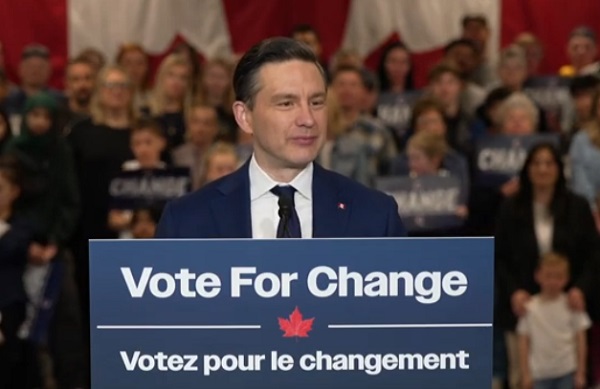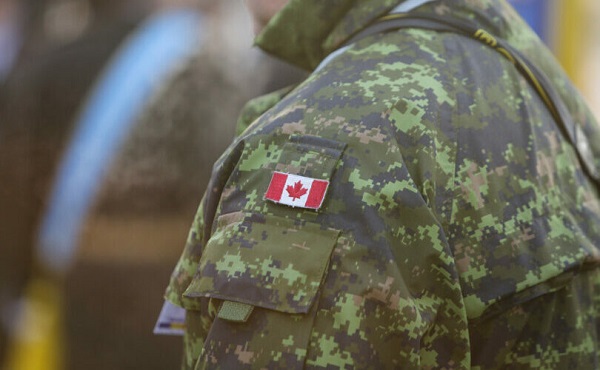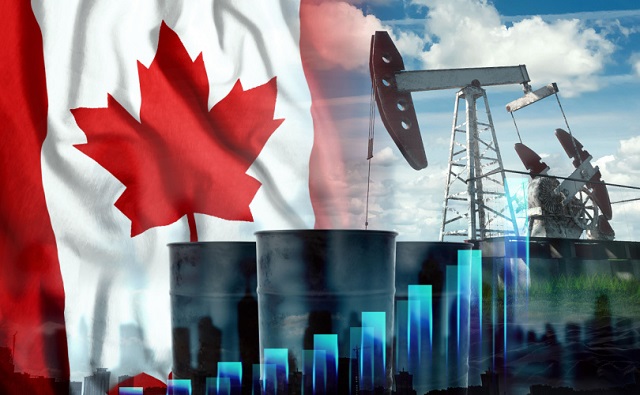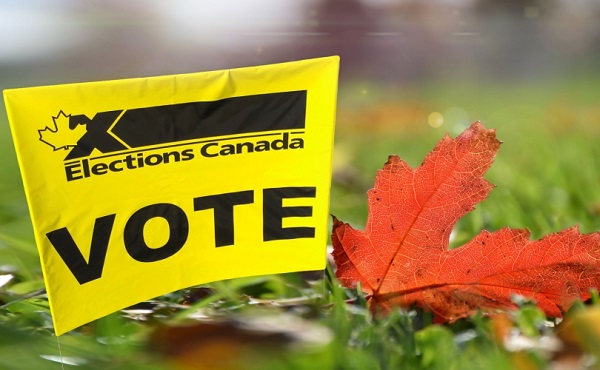Alberta
Budget 2023 – Alberta’s Affordability Action Plan

Budget 2023 funds ongoing programs and services that support Albertans and builds on Alberta’s Affordability Action Plan, expanding relief for high utility costs and providing new measures for students, workers in the social services and disability sectors, and in continuing care.
Alberta’s government is permanently extending the natural gas rebate program. Moving forward, whenever natural gas prices exceed $6.50 per gigajoule, the rebate will take effect.
“Inflation continues to challenge Albertans, and affordability remains top of mind for many. That’s why we are working hard to save Albertans money so they can focus on what really matters. Budget 2023’s strong affordability measures – including extended fuel tax relief, continued utility rebates and new supports for students and social services workers – will help to keep life affordable for families, seniors, individuals and vulnerable groups across the province.”
Supporting post-secondary students
Post-secondary students in Alberta will see real relief, thanks to $238 million for new, targeted affordability measures.
Budget 2023 caps tuition fee increases for domestic students at two per cent annually effective for the 2024-25 school year.
Students receiving financial assistance will get more help repaying their loans, with an extension of the student loan grace period from six months to one year and an increase to the threshold for eligibility for the loan repayment assistance plan to $40,000, up from $25,000 in income.
Albertans repaying student loans will see their payments drop by an average of $15 per month thanks to the new student loan interest rate being reduced from prime plus one per cent to prime.
“These new measures will help all students keep up with the increased cost of living. We are committed to keeping post-secondary education accessible and affordable so that all Albertans can gain the skills and knowledge they need to build successful careers and secure Alberta’s future.”
Supporting families
Parents shouldn’t have to choose between filling up the car and putting food on the table. Budget 2023 leaves more money in the pockets of Alberta families by funding affordability measures, including direct payments of $100 per month through June 2023. All parents or guardians of a dependent under 18 can still apply to get $100 per month for six months for each child if their adjusted household income is below $180,000, based on the 2021 tax year.
Through Budget 2023, investments of $90 million over three years will help secure more supports for families with young children by indexing the Alberta Child and Family Benefit to inflation, increasing benefit amounts by six per cent in 2023.
Enabling parents to expand their families and helping more children find their forever home by making in-Alberta adoptions more affordable is an important initiative in Budget 2023. Alberta’s government is investing $12 million more over three years and providing supplementary health benefits for children adopted from government care or through licensed adoption agencies to ensure more successful adoptions. In addition, there is $6,000 in grant funding for prospective adoptive parents making less than $180,000 a year and an increase of the provincial adoption expense tax credit to $18,210 to match the federal threshold in 2023.
Budget 2023 allocates $1.3 billion in 2023-24, $1.4 billion in 2024-25 and $1.6 billion in 2025-26 in operating expense in the Child Care program from provincial funding and Alberta federal-provincial child-care agreements.
An additional operating expense of $143 million over three years responds to the increasing complexity of children receiving child intervention services and an additional $26 million over three years will support youth and young adults in care transitioning to adulthood.
“We want a better future for our children, which is why we are continuing to prioritize making high-quality child care more affordable and accessible for Alberta families. We are also providing more supports to reduce barriers in the adoption process as well as increasing supports for vulnerable children and youth in care while advancing our government’s priority of making life more affordable for all Albertans.”
Supporting seniors and other vulnerable Albertans
Seniors aged 65 and over with a household income under $180,000 based on the 2021 tax year are still eligible to receive direct payments of $100 per month for six months (January 2023 to June 2023).
Albertans who receive the Alberta Seniors Benefit, AISH and Income Support have been automatically enrolled to receive the same Affordability Relief Payments of $600 over six months.
Alberta’s government is further supporting seniors, low-income and vulnerable Albertans with a six per cent increase to core benefits in 2023. Benefits including AISH, Income Support and the Alberta Seniors Benefit are indexed to inflation, which is helping Albertans combat today’s increased cost of living.
Budget 2023 helps put food on Albertans’ tables by funding local food banks, including $10-million direct funding through the Family and Community Support Services Association of Alberta and $10 million to match private donations, over two years.
Alberta’s government values the work done by disability service providers and workers throughout the province in caring for the disability community. That is why Budget 2023 provides a five per cent increase to the disability sector to help with administration costs in Persons with Developmental Disabilities (PDD) and Family Support for Children with Disabilities (FSCD) provider contracts and family-managed agreements.
It is important that Albertans are able to get to and from work, to a doctor’s appointment, the grocery store or a pharmacy. To support low-income transit pass programs, Budget 2023 is investing $16 million in 2023-24 to support municipalities throughout the province as they provide affordable transit to their residents.
“For so many seniors, low-income individuals and Albertans living with disabilities, the increased cost of living has made life more and more difficult to afford. Alberta’s government is continuing to take steps to support these individuals and families, which I know will have a huge impact for many households across the province.”
Supporting social services and disability services workers
The government is helping to attract and retain more social service workers to support more people in need. Budget 2023 includes $102 million in 2023-24 to increase wages for more than 20,000 workers in disability services, homeless shelters and family violence prevention programs. This funding builds on the $24 million the government provided to service providers in February to enable wage increases retroactive to Jan. 1, 2023.
Alberta’s government is also providing $8 million in 2023-24 for disability service providers to address increasing administrative costs.
Budget 2023 secures Alberta’s bright future by transforming the health-care system to meet people’s needs, supporting Albertans with the high cost of living, keeping our communities safe and driving the economy with more jobs, quality education and continued diversification.
Alberta
Low oil prices could have big consequences for Alberta’s finances

From the Fraser Institute
By Tegan Hill
Amid the tariff war, the price of West Texas Intermediate oil—a common benchmark—recently dropped below US$60 per barrel. Given every $1 drop in oil prices is an estimated $750 million hit to provincial revenues, if oil prices remain low for long, there could be big implications for Alberta’s budget.
The Smith government already projects a $5.2 billion budget deficit in 2025/26 with continued deficits over the following two years. This year’s deficit is based on oil prices averaging US$68.00 per barrel. While the budget does include a $4 billion “contingency” for unforeseen events, given the economic and fiscal impact of Trump’s tariffs, it could quickly be eaten up.
Budget deficits come with costs for Albertans, who will already pay a projected $600 each in provincial government debt interest in 2025/26. That’s money that could have gone towards health care and education, or even tax relief.
Unfortunately, this is all part of the resource revenue rollercoaster that’s are all too familiar to Albertans.
Resource revenue (including oil and gas royalties) is inherently volatile. In the last 10 years alone, it has been as high as $25.2 billion in 2022/23 and as low as $2.8 billion in 2015/16. The provincial government typically enjoys budget surpluses—and increases government spending—when oil prices and resource revenue is relatively high, but is thrown into deficits when resource revenues inevitably fall.
Fortunately, the Smith government can mitigate this volatility.
The key is limiting the level of resource revenue included in the budget to a set stable amount. Any resource revenue above that stable amount is automatically saved in a rainy-day fund to be withdrawn to maintain that stable amount in the budget during years of relatively low resource revenue. The logic is simple: save during the good times so you can weather the storm during bad times.
Indeed, if the Smith government had created a rainy-day account in 2023, for example, it could have already built up a sizeable fund to help stabilize the budget when resource revenue declines. While the Smith government has deposited some money in the Heritage Fund in recent years, it has not created a dedicated rainy-day account or introduced a similar mechanism to help stabilize provincial finances.
Limiting the amount of resource revenue in the budget, particularly during times of relatively high resource revenue, also tempers demand for higher spending, which is only fiscally sustainable with permanently high resource revenues. In other words, if the government creates a rainy-day account, spending would become more closely align with stable ongoing levels of revenue.
And it’s not too late. To end the boom-bust cycle and finally help stabilize provincial finances, the Smith government should create a rainy-day account.
Alberta
Governments in Alberta should spur homebuilding amid population explosion

From the Fraser Institute
By Tegan Hill and Austin Thompson
In 2024, construction started on 47,827 housing units—the most since 48,336 units in 2007 when population growth was less than half of what it was in 2024.
Alberta has long been viewed as an oasis in Canada’s overheated housing market—a refuge for Canadians priced out of high-cost centres such as Vancouver and Toronto. But the oasis is starting to dry up. House prices and rents in the province have spiked by about one-third since the start of the pandemic. According to a recent Maru poll, more than 70 per cent of Calgarians and Edmontonians doubt they will ever be able to afford a home in their city. Which raises the question: how much longer can this go on?
Alberta’s housing affordability problem reflects a simple reality—not enough homes have been built to accommodate the province’s growing population. The result? More Albertans competing for the same homes and rental units, pushing prices higher.
Population growth has always been volatile in Alberta, but the recent surge, fuelled by record levels of immigration, is unprecedented. Alberta has set new population growth records every year since 2022, culminating in the largest-ever increase of 186,704 new residents in 2024—nearly 70 per cent more than the largest pre-pandemic increase in 2013.
Homebuilding has increased, but not enough to keep pace with the rise in population. In 2024, construction started on 47,827 housing units—the most since 48,336 units in 2007 when population growth was less than half of what it was in 2024.
Moreover, from 1972 to 2019, Alberta added 2.1 new residents (on average) for every housing unit started compared to 3.9 new residents for every housing unit started in 2024. Put differently, today nearly twice as many new residents are potentially competing for each new home compared to historical norms.
While Alberta attracts more Canadians from other provinces than any other province, federal immigration and residency policies drive Alberta’s population growth. So while the provincial government has little control over its population growth, provincial and municipal governments can affect the pace of homebuilding.
For example, recent provincial amendments to the city charters in Calgary and Edmonton have helped standardize building codes, which should minimize cost and complexity for builders who operate across different jurisdictions. Municipal zoning reforms in Calgary, Edmonton and Red Deer have made it easier to build higher-density housing, and Lethbridge and Medicine Hat may soon follow suit. These changes should make it easier and faster to build homes, helping Alberta maintain some of the least restrictive building rules and quickest approval timelines in Canada.
There is, however, room for improvement. Policymakers at both the provincial and municipal level should streamline rules for building, reduce regulatory uncertainty and development costs, and shorten timelines for permit approvals. Calgary, for instance, imposes fees on developers to fund a wide array of public infrastructure—including roads, sewers, libraries, even buses—while Edmonton currently only imposes fees to fund the construction of new firehalls.
It’s difficult to say how long Alberta’s housing affordability woes will endure, but the situation is unlikely to improve unless homebuilding increases, spurred by government policies that facilitate more development.
-

 Automotive2 days ago
Automotive2 days agoHyundai moves SUV production to U.S.
-

 2025 Federal Election2 days ago
2025 Federal Election2 days agoAs PM Poilievre would cancel summer holidays for MP’s so Ottawa can finally get back to work
-

 armed forces1 day ago
armed forces1 day agoYet another struggling soldier says Veteran Affairs Canada offered him euthanasia
-

 2025 Federal Election2 days ago
2025 Federal Election2 days agoPoilievre Campaigning To Build A Canadian Economic Fortress
-

 2025 Federal Election2 days ago
2025 Federal Election2 days agoThe Cost of Underselling Canadian Oil and Gas to the USA
-

 Opinion7 hours ago
Opinion7 hours agoCanadians Must Turn Out in Historic Numbers—Following Taiwan’s Example to Defeat PRC Election Interference
-

 International15 hours ago
International15 hours agoHistory in the making? Trump, Zelensky hold meeting about Ukraine war in Vatican ahead of Francis’ funeral
-

 Automotive2 days ago
Automotive2 days agoCanadians’ Interest in Buying an EV Falls for Third Year in a Row





